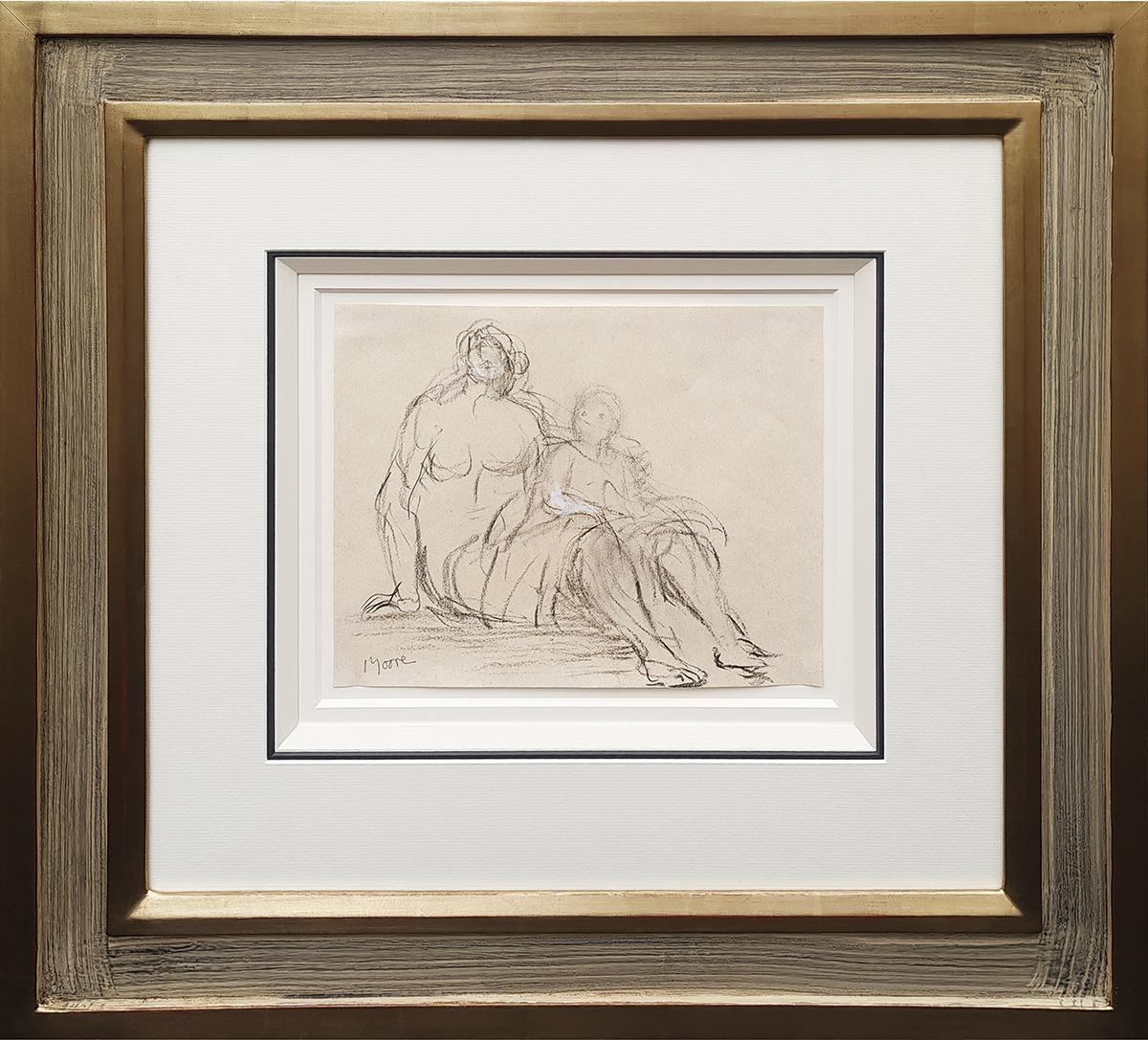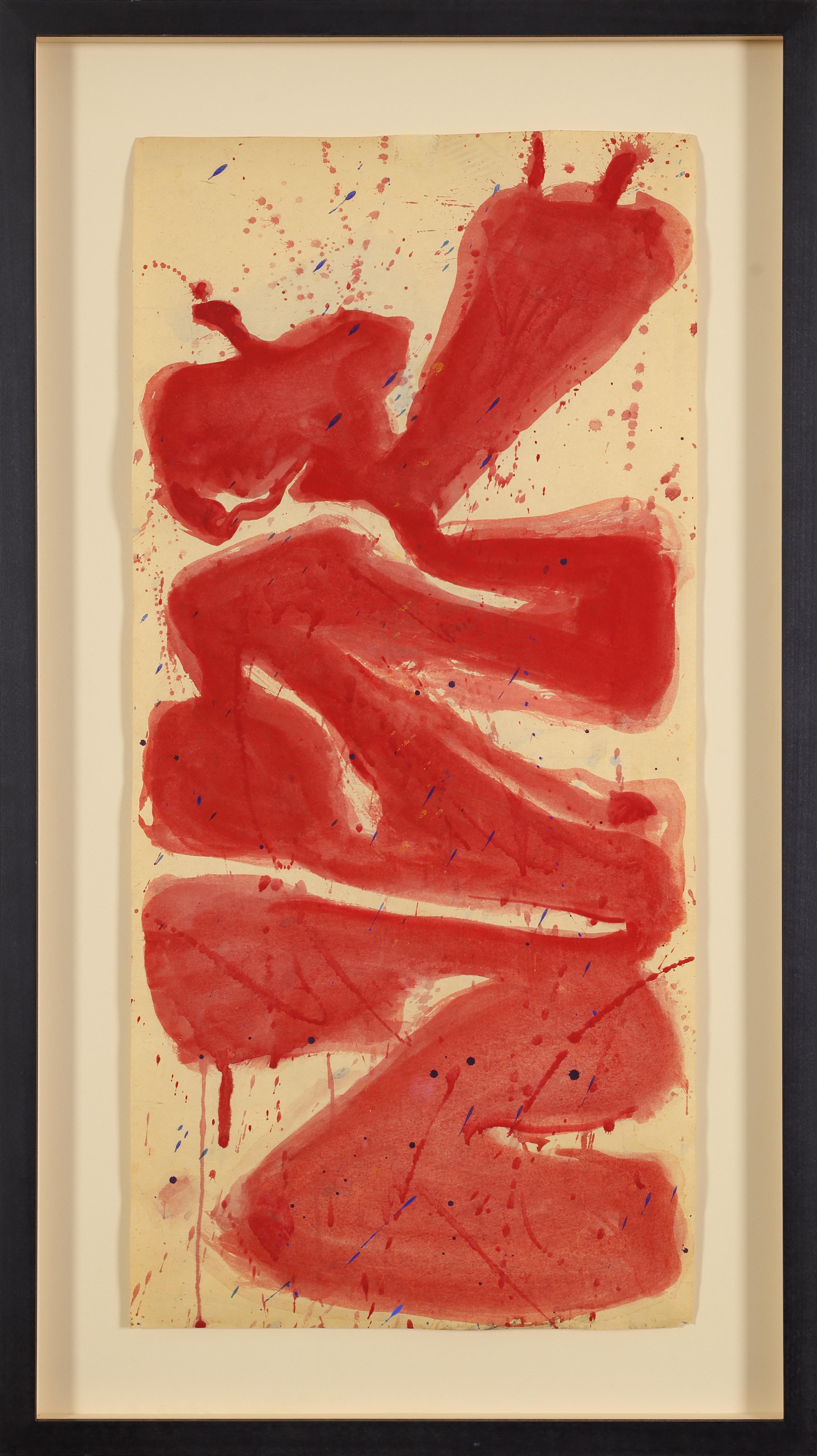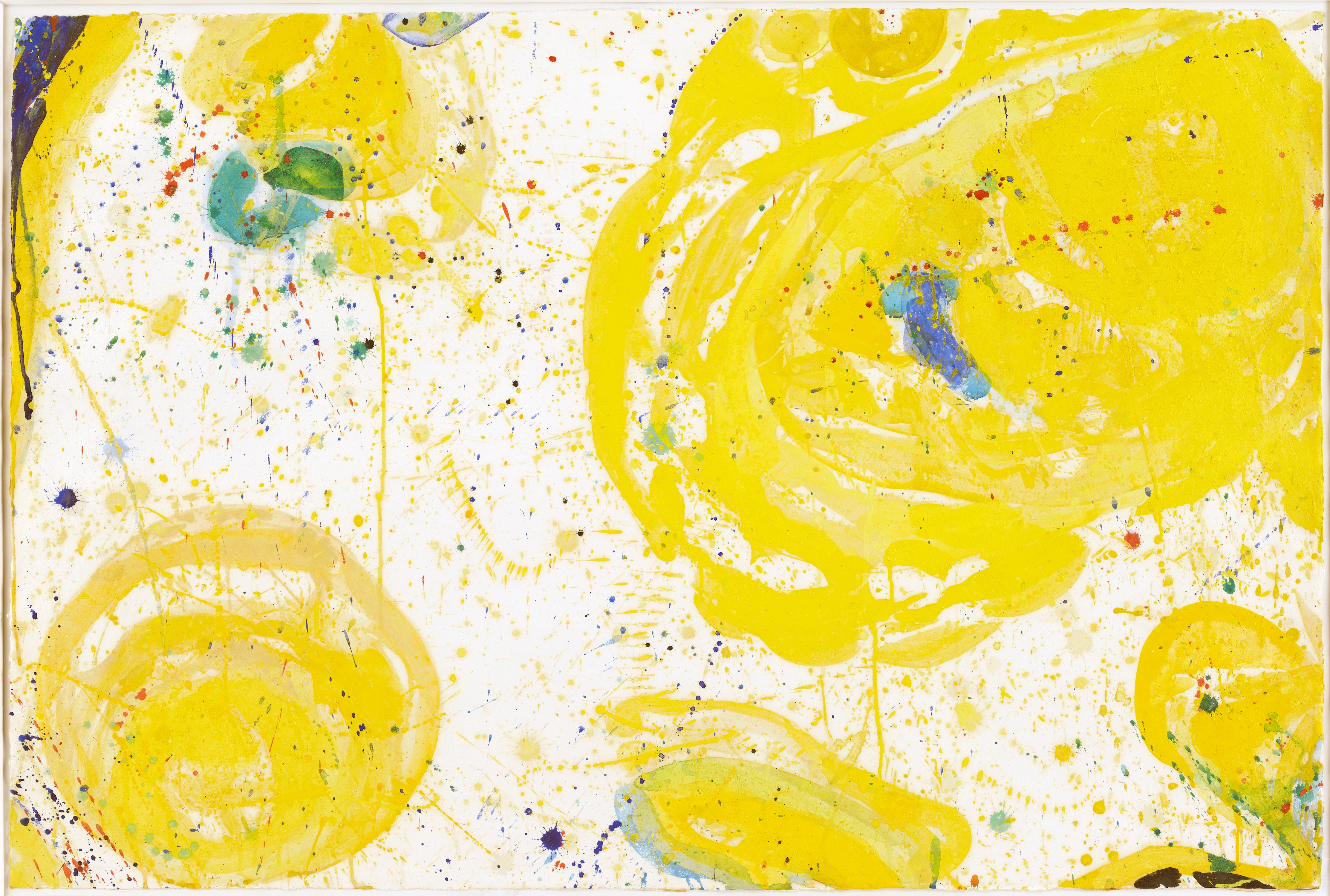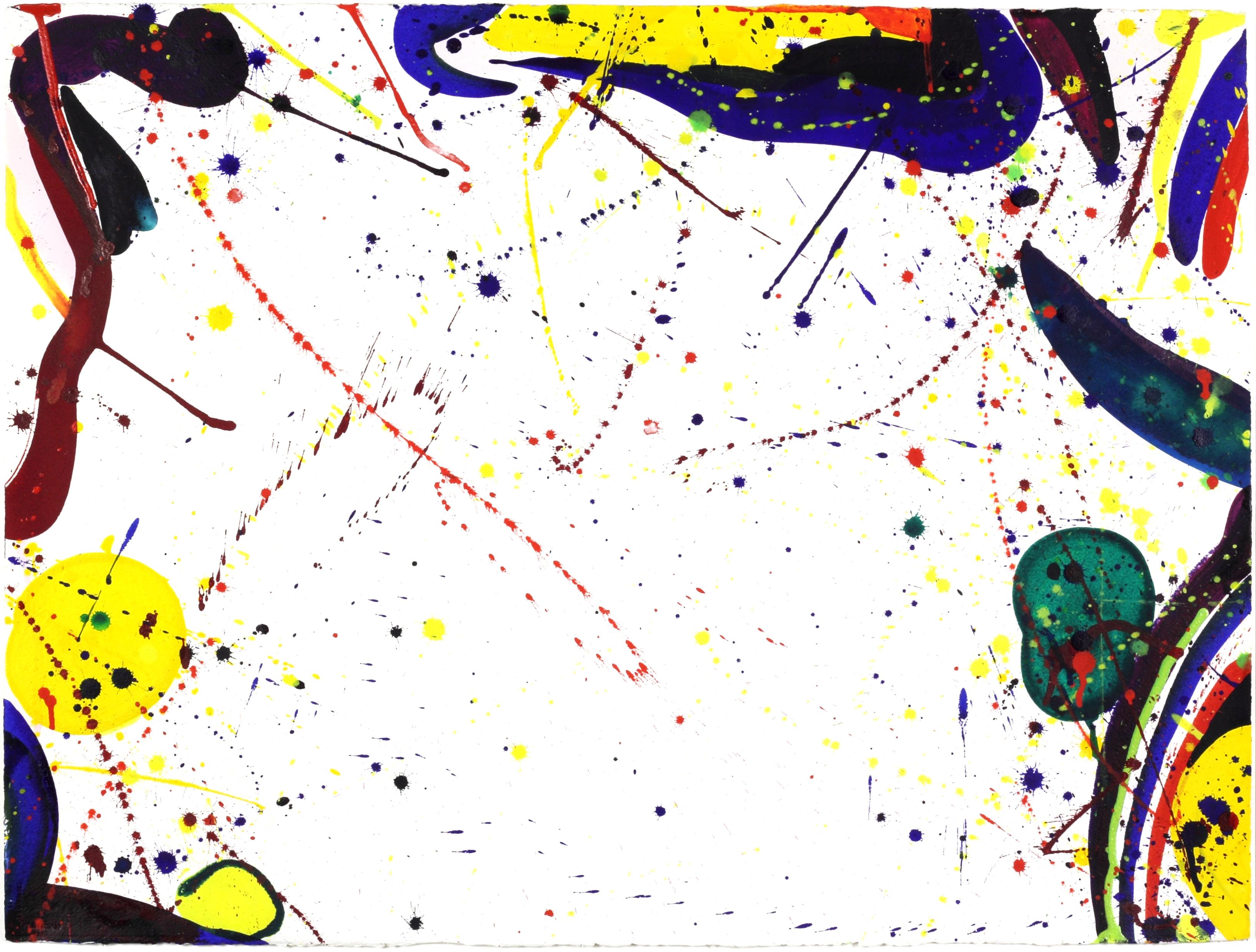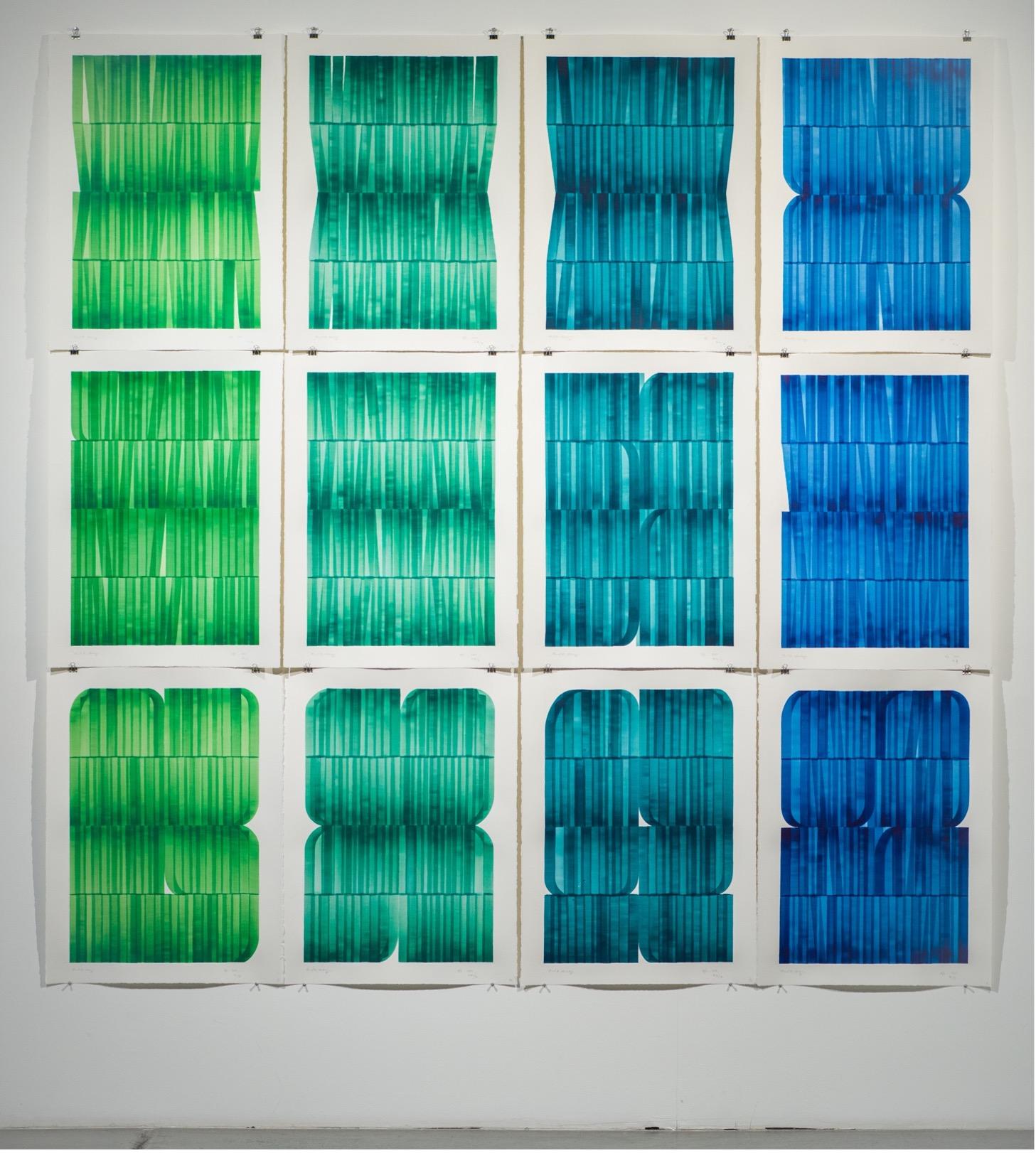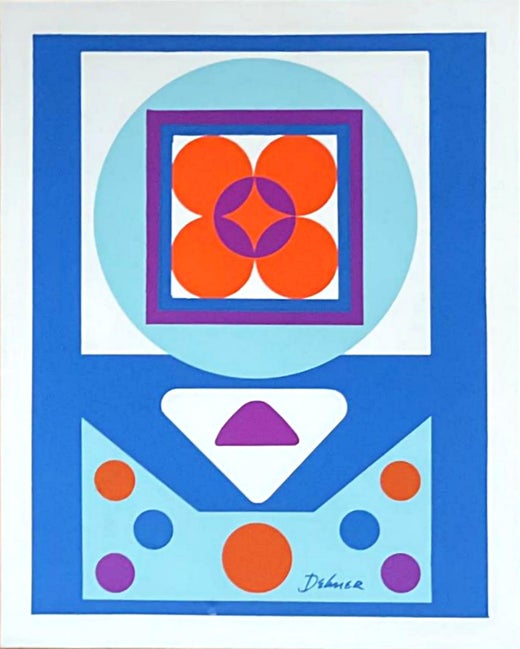Dorothy DehnerThe Dead Tiger1955
1955
About the Item
- Creator:Dorothy Dehner (1901-1994, American)
- Creation Year:1955
- Dimensions:Height: 18.25 in (46.36 cm)Width: 23 in (58.42 cm)
- Medium:
- Movement & Style:
- Period:
- Condition:Staining from previous hinging in all four corners of the sheet. Colors very fresh, never framed.
- Gallery Location:Fairlawn, OH
- Reference Number:
Dorothy Dehner
Dorothy Dehner was one of the important women artists in the United States in the mid-century American abstraction movement (the Museum of Modern Art in New York has more than a dozen of her works in its collection). Unfortunately, she has been overshadowed by the titanic presence of David Smith (the most important sculptor of the Abstract Expressionist period), whom she married when they were both young artists experimenting with abstraction in the 30s. Though she, too, devoted an amount of time making sculpture, she was the more talented painter of the two (they separated in the 40s, allegedly due to Smith's feelings of competition with Dehner). Her pen and ink and watercolor works are the most moving, expressive and original of her creations. When the Museum of Modern Art decided to buy one of her works for its permanent collection in 1953, it was one of these watercolors it chose. The Jewish Museum and Cleveland Museum of Art have held major retrospectives of Dehner's work. In 1993, the Metropolitan Museum of Art purchased one of Dehner's watercolors from this same period. Her work is also in the British Museum, Hirshhorn Museum, Phillips Collection (Washington D. C.), Philadelphia Museum of Art and Museum of American Art, among others.
- ShippingRetrieving quote...Ships From: Fairlawn, OH
- Return PolicyA return for this item may be initiated within 10 days of delivery.
- UntitledBy Dorothy HellerLocated in Fairlawn, OHUntitled Watercolor on paper, 1990 Signed lower left corner Provenance: Gift of the Artist to one of hr patrons Distinguished Midwest Private Collection Conditi...Category
1990s Abstract Abstract Drawings and Watercolors
MaterialsWatercolor
- Nickle DrawingBy Dorothy DehnerLocated in Fairlawn, OHNickle Drawing Ink and watercolor on laid paper, 1982 Signed and dated lower right in ink The title references a comment that her husband, David Smith, made regarding her drawings. He said that they were only worth a nickle and the name stuck even thought her works are highly prized. The dating of this work reflects the date inscribed on the watercolor. The style and black ink lines with dots terminating the line is a compositional device the artist used in the 1950's. Condition: Very fine/excellent 4 old hinge residue in the corners verso from previous matting Sheet/image size: 7 1/2 x 4 7/8 inches Dorothy Dehner (1901-1994) Painter, sculptor, art writer, and poet, Dorothy Dehner explored abstraction, cubism, realism and surrealism during her artistic journey. Early in her career she was known for painting and for large-cast metal sculptures, but in the 1950s and 1960s, turned increasingly to wood cut into hard-edge geometric shapes. From 1950, she lived primarily in New York City. Dorothy Dehner was born in 1901 in Cleveland, Ohio, but, as a teenager in 1916, moved to Pasadena, California when her parents died. Her artistic interests were initially in acting. She majored in drama at UCLA for the school year of 1922-1923, then moved to New York City to study acting at the American Academy of Dramatic Art. After travel to Europe in France, Italy and Switzerland in 1925, where she saw Cubist and Fauve paintings as well as the great art of the ages, Dehner entered the Art Students League to study sculpture, but switched to painting because she felt the former was bound in academic formula. She studied drawing with Kimon Nicolaides and painting with Kenneth Hayes Miller. In 1929, she studied painting with Jan Matulka. Meeting artist John Graham in that year, he introduced her to Milton Avery, Stuart Davis and Arshile Gorky. She would also take art courses years later at Skidmore College in 1951. Dehner married sculptor David Smith in 1927. She was evidently very helpful in his artistic growth, but friction would develop because Smith allegedly saw his wife as artistic competition. Although she painted and drew Cubist and Surrealist works during their marriage, and realistic ones of life on their Bolton Landing, New York farm during the period 1941 to 1944, Dehner would essentially put her exhibition life on hold until their divorce in 1952. Meanwhile, they traveled to Europe in 1935. She later wrote about Smith, as well as painter John Graham and Jan Matulka, her teacher. Although she had shown in the 1946 Audubon Artists exhibition, winning first prize in drawing, and in the Whitney Annual of 1951, it was the year of her divorce, 1952, that Dehner had her first one-person exhibition at the Rose Fried Gallery...Category
1980s Abstract Abstract Drawings and Watercolors
MaterialsWatercolor
- Black and White CatBy Sam SpanierLocated in Fairlawn, OHBlack and White Cat Ink and watercolor on paper, c. 1970 Unsigned Provenance: Estate of the artist (Estate No. 737) Condition: Excellent Image/Sheet size: 4 3/4 x 6 1/4 inches Sam Spanier (1925-2008) Born in Brooklyn New York, Sam Spanier studied painting with Hans Hofmann (1949–50) and also at the Taos Valley Art School (1951). His formative years as a working artist were spent in Paris (1951–52), where he also became involved with the work of G. I. Gurdjieff, through his disciple, Mme. Jeanne de Salzmann. By 1953, Spanier’s work had already begun to meet with critical acclaim. That year, he had his first solo gallery show, and was selected by Milton Avery and Hans Hofmann to receive the prestigious Lorian Fund Award. His second solo exhibition, in 1955, was curated by renowned museum director, Gordon Washburn. Spanier’s early work was reviewed by Dore Ashton, Donald Judd, Fairfield Porter, Stuart Preston, and Irving Sandler, among other significant critics of the period. Spanier’s spiritual path increasingly became the central focus of both his life and his art. In 1960, he was introduced to the teachings of Sri Aurobindo, which led to visits to the Sri Aurobindo Ashram in Pondicherry, India, in 1962 and 1964, during which he was inspired to leave New York City and found Matagiri (in 1968)—a spiritual center in Woodstock, New York—with his lifelong partner, Eric Hughes. The work he embarked upon there bifurcates his life as an artist, separating him from New York’s art world, and radically altering the trajectory of his career. From that point forward, it would be difficult, perhaps impossible, to consider his artistic endeavor apart from the life of dedication he had undertaken, and to which he remained committed. As early as 1954, Dore Ashton had recognized in Sam Spanier a “haptic visionary;” in 1960, Irving Sandler wrote that the people in Spanier’s paintings “seem to have witnessed some transfiguring event.” In his later paintings—usually worked in oil pastel on panel or paper—made during intermittent creative periods, from the mid-1970s to the final years of his life, the artist’s inner life remains always apparent in his subject matter; and from the portraits and abstract Buddha-like figures and heads, to the fantasy landscapes, the paintings are redolent with a rich intensity of color and light that can only be described as inspired. Sam Spanier’s works are in the collections of the Historical Society of Woodstock Museum, and the Woodstock Artists Association & Museum. He received the Woodstock Artists Association Lifetime Achievement Award in 2007. Selected Solo Exhibitions: Urban Gallery, New York (1954, 1955, 1956); Wittenborn Gallery, New York (1958); Gallery Mayer, New York (1958, 1959, 1960); Unison Gallery, New Paltz (1986, 1995, 2009); Limner Gallery, New York (1988); Fletcher Gallery, Woodstock, New York (1999). Selected Group Exhibitions: Salon des Comparaisons, Musée d’Art Moderne, Paris, France (1952); October Exhibition of Oil Paintings, New York City Center Gallery, New York (1954); Salon de Mai, Musée d’Art moderne de la ville de Paris, Centre Culturel de Saint-Germain-en-Laye, Paris, France (1954); Carnegie International, Carnegie Institute, Pittsburgh, Pennsylvania (1955); Les Plus Mauvais Tableaux, Galerie Prismes, Paris (1955); Première Exposition Internationale de l’Art Plastique Contemporain, Musée des Beaux-Arts de la Ville de Paris (1956); Recent Paintings USA: The Figure, The Museum of Modern Art (1960); Winter’s Work, Woodstock Artists Association, Woodstock, New York (1985); Juried Group Show, Woodstock Artists Association, Woodstock, New York (1986); Woodstock Artists, Self-Portraits, Historical Society of Woodstock Museum, Woodstock, New York (1988); Portraits, Albert Shahinian Fine Art, Poughkeepsie, New York (2003); The World We Live In, Upstate Art, Phoenicia, New York (2003); Show of Heads, Limner Gallery, Phoenicia, New York (2004). Selected Writings on the Artist: Dore Ashton, “Sam Spanier,” Art Digest (May 1, 1954) and “Sam Spanier,” The New York Times (March 16, 1960); Cassia Berman, “Sam Spanier: A Divine Calling,” Woodstock Times (February 7, 2008); Lawrence Campbell, “Sam Spanier: Exhibition of Paintings at Urban Gallery,” Art News...Category
1970s Abstract Abstract Drawings and Watercolors
MaterialsInk, Watercolor
- Untitled (six vignettes)By Pierre CourtinLocated in Fairlawn, OHSigned lower center edge Annotated verso: “5 Juin 1966 _____ et de soleil, de et d’oseille” Image: 6 3/4 x 4 5/8" Frame: 14 1/2 x 12 3/4" Finishe...Category
1960s Abstract Abstract Drawings and Watercolors
MaterialsWatercolor, Gouache
- Untitled (Abstraction)By Charles Harris ( Beni Kosh )Located in Fairlawn, OHaka Beni Kosh Untitled (Abstraction) Watercolor on paper, 1970's Unsigned Ben Kosh Estate Stamp verso, No. 754 Condition: Very good Sheet size: 10 5/8 x 14 9/16 inches Provenance: Es...Category
1970s Abstract Abstract Drawings and Watercolors
MaterialsWatercolor
- Untitled AbstractionBy John von WichtLocated in Fairlawn, OHUntitled Abstrraction Gouache, watercolor and pigments on paper, c. 1960 Signed lower right in pencil (see photo) Image: 17 x 22 inches Sheet: 25 1/4 x 29 3/4 inches Frame: 25 1/4 x ...Category
1960s Abstract Expressionist Abstract Drawings and Watercolors
MaterialsWatercolor
- Seated Mother and Child, 1 (executed 1982)By Henry MooreLocated in Belgravia, London, LondonCharcoal and gouache on paper Paper size: 9x 11.5 inches Framed size: 23.5 x 25.75 inches Signed lower right Provenance: Raymond Spencer Co.; Galerie Dominion, Montreal, 1982; Dr Max Stern, Montreal, 1982; Leslie Sacks Fine Art, Los Angeles; Purchased by Haynes Fine Art...Category
20th Century Abstract Abstract Drawings and Watercolors
MaterialsPaper, Charcoal, Gouache
- Composition in RedBy Sam FrancisLocated in London, GBSam Francis Composition in Red c. 1960 Gouache on paper 52.5 x 24.5 cms (20 11/16 x 9 11/16 ins) SF14434 $125,000 Exhibited: Bernard Jacobson Gall...Category
1960s Abstract Expressionist Abstract Drawings and Watercolors
MaterialsGouache
- Untitled (SF64-121)By Sam FrancisLocated in London, GBSam Francis Untitled (SF64-121) 1964 Gouache and oil on paper 69.9 x 104.4 cms (27 1/2 x 41 1/8 ins) SF14605 Exhibited: New York, 'Chamberlain/Francis', Van Doren Waxter, July 11- ...Category
1960s Abstract Expressionist Abstract Drawings and Watercolors
MaterialsGouache
- Untitled (#2 Pri-Rain) (SF64-592)By Sam FrancisLocated in London, GBSam Francis Untitled (#2 Pri-Rain) (SF64-592) 1964 Gouache on paper 57.2 x 75.6 cms (22 1/2 x 29 3/4 ins) Frame size: 82.9 x 103.2 cms (32 5/8 x 40 5/8 ins) SF14652 $300,000 Exhibit...Category
1960s Abstract Expressionist Abstract Drawings and Watercolors
MaterialsGouache
- Fire (3) by Yayoi Kusama - Abstract contemporary work on paperBy Yayoi KusamaLocated in London, GB*UK BUYERS WILL PAY AN ADDITIONAL 5% IMPORT DUTY ON TOP OF THE ABOVE PRICE Fire (3) by Yayoi Kusama (b. 1929) Gouache and pastel on paper 27.7 x 20.3 cm (10 ⁷/₈ x 8 inches) Signed, ...Category
1950s Abstract Abstract Drawings and Watercolors
MaterialsPaper, Pastel, Gouache
- G.3/B.5 GridBy Michael MarloweLocated in Phoenix, AZMichael Marlowe is a studio artist, art director and production designer working in the film and television industry. Marlowe’s large-scale painting process takes an abstract approac...Category
2010s Abstract Abstract Drawings and Watercolors
MaterialsPaper, Watercolor
